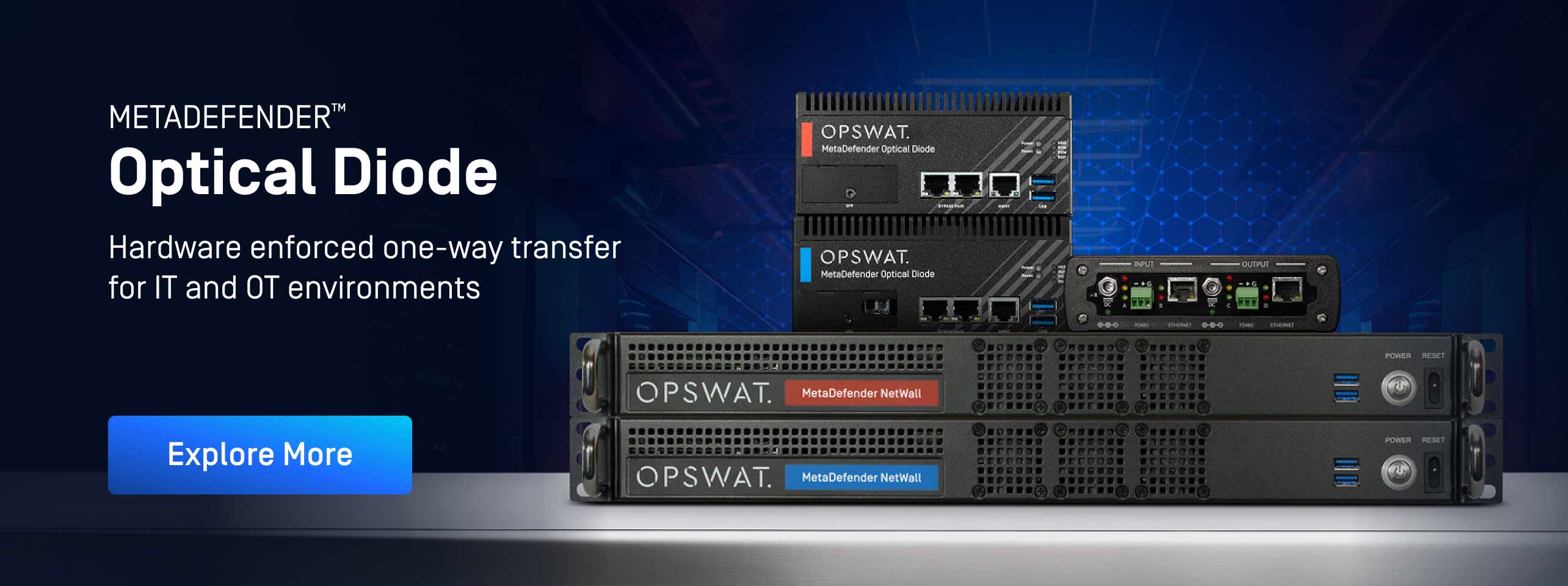Modern cybersecurity strategies rely on multiple layers of defense to secure critical networks. Two key components in this layered approach are data diodes and firewalls. While both are designed to protect network boundaries, they work in fundamentally different ways—and are suited for different use cases. Let’s explore how these technologies compare in terms of data flow, security, and compliance.
Introduction to Network Security Mechanisms
Securing sensitive environments—especially critical infrastructure—requires precise control over how data moves in and out of a network. Network security tools help organizations enforce these controls and reduce potential attack surfaces.
Among these tools, data diodes and firewalls stand out for their roles in perimeter defense. Firewalls are more common and widely deployed, while data diodes serve highly secure environments that demand strict one-way communication. Both can be considered security appliances, but they differ in design and application.
What is a Data Diode?
A data diode is a hardware device that allows information to flow in only one direction—from a secure network to a less secure one or vice versa. This is achieved through physical components that prevent return signals, making it impossible for data to be sent back across the link.
Often referred to as unidirectional security gateways, optical diodes, or information diodes, these devices are used in high-security settings across critical infrastructure and enterprises, such as government, military, energy, banking, and manufacturing networks. They are ideal for scenarios where data must be exported for monitoring or analysis without risking exposure to threats from outside systems.
What is a Firewall?
A firewall is a security system that monitors and controls incoming and outgoing network traffic based on predetermined rules. Unlike data diodes, firewalls support bidirectional communication, making them flexible tools for controlling access across network segments.
Firewalls can be hardware, software, or a combination of both. They commonly use techniques like packet filtering, stateful inspection, and intrusion prevention to detect and block malicious traffic.
Comparison of Data Diodes and Firewalls
While both technologies contribute to network segmentation and information assurance, their functions and implementations are distinct.
| Feature | Data Diode | Firewall |
| Data Flow | Unidirectional | Bidirectional |
| Enforcement Method | Hardware-enforced | Rules-based filtering |
| Security Benefit | Complete isolation, blocks inbound access | Traffic inspection and filtering |
| Common Use Cases | Critical infrastructure, air-gapped systems | Enterprise IT networks, perimeter defense |
| Risk of Backchannel Attack | Eliminated | Possible with misconfiguration |
| Network confidentiality | Uses protocol break. No routable information shared between networks | Routable information share between networks |
Advantages and Disadvantages
| Data Diode | Firewall | |
| Benefits |
|
|
| Limitations |
|
|
Does your data diode have the right set of features? Explore our in-depth buyer's guide and find out: Read The Guide
Regulatory Compliance and Standards
Compliance with industry regulations and cybersecurity frameworks is a key driver for adopting advanced security controls. Both firewalls and data diodes contribute to compliance, but in different ways.
Key Standards: ISO 27001 and NIST
ISO 27001 emphasizes the implementation of controls to protect data confidentiality, integrity, and availability. Using firewalls helps meet requirements for access control and intrusion prevention. Data diodes strengthen compliance by preventing data leakage and enforcing segmentation.
NIST guidelines, including NIST SP 800-53 and the Cybersecurity Framework (CSF), promote defense-in-depth and segmentation strategies. Data diodes support unidirectional flow and isolation of sensitive zones. Firewalls contribute to monitoring, alerting, and access management across multiple layers.
For organizations operating in sectors like defense, manufacturing, and critical infrastructure, incorporating both technologies can help meet overlapping requirements while reducing audit risk.
MetaDefender Optical Diode
Regardless of your industry, use-case, or environment, OPSWAT’s data diode product suite can keep your sensitive networks secure. Whether you need C1D2 or EAL4+ certified hardware, high availability, or the added security of MetaDefender Core technologies scanning data before it’s sent, MetaDefender Optical Diode’s scalable, transparent protection easily and seamlessly integrates into your existing infrastructure.
Learn how OPSWAT’s data diode solutions secure industrial and classified environments, explore our blog on essential use cases or read about data diodes in ICS environments.
Frequently Asked Questions (FAQs)
Q: What is a data diode used for?
A data diode is used to ensure one-way data flow between networks, typically to export data from secure systems without allowing inbound access.
Q: What is a data diode?
A data diode is a hardware device that physically enforces unidirectional data flow to isolate sensitive networks and prevent backchannel communication.
Q: What’s the difference between a data diode and a firewall?
A data diode enforces one-way data transmission through hardware, while a firewall filters bidirectional traffic based on rules.
Q: What is a firewall?
A firewall is a security device or software that manages and filters network traffic between zones based on configurable policies.
Q: What are the advantages and disadvantages of data diodes and firewalls?
Data diodes offer strict isolation but lack bidirectional support. Firewalls provide flexibility but require careful configuration to avoid vulnerabilities.
Q: What are the disadvantages of data diode?
They are generally an unknown entity—firewalls are known and familiar, and disadvantages aside, are easily accessible. The knowledge gap present on diodes (especially when it comes to use cases) puts them at a disadvantage when they could provide advanced security in those situations.
Q: What are the three types of firewalls?
The three main types of firewalls are packet-filtering firewalls, stateful inspection firewalls, and proxy-based firewalls.
Q: What is the difference between unidirectional security gateway and data diode?
The terms are often used interchangeably, but some unidirectional gateways may include protocol conversion or additional software features on top of the hardware-enforced diode.



